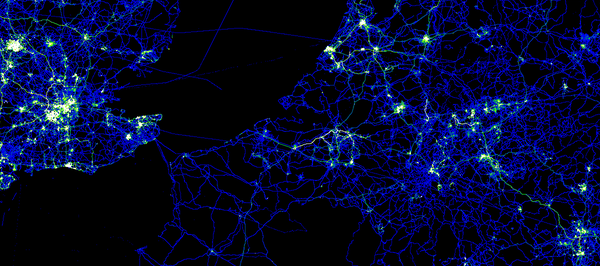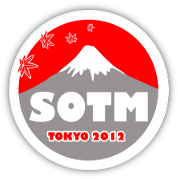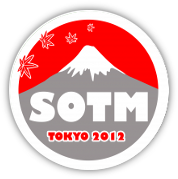
OpenStreetMap contributors have used track files from their GPSr devices for years while improving OSM data. They have shared those track files and the track points have been available to other mappers via editors and the web site. Now we are providing a way for you to get all of those points at once.
This is the collected GPS point data from the first seven and a half years of OpenStreetMap. It is a very large collection of points and it is very raw data.
- the compressed file is 7GBytes in size
- uncompressed, the file is a 55GByte text file
- the data consists of coordinate pairs only, with no track file or meta data
- points were contributed by thousands of users
- points were contributed as thousands of distinct track files
- the data includes 2,770,233,904 points
Is this a big deal?
This might be the largest collection of Open Data GPS points published. Do you know of larger collections? Tell us in the comments.
Working with this file might not be your cup of tea
. Over time, I expect that tools will emerge from the community to make this data easier to manage. For now, it is raw and it is extensive.
All of this data has been previously available to OpenStreetMap contributors in other forms, via editors and the web site. This file provides a new way to get the same data and to get all of it at once.
Example data
If you do decide to work with the file, this is the format that you can expect.
-900000000,1771882380
-900000000,1293757490
-891154290,1237501070
-877697750,1653442410
-871875000,1589069750
-871875000,1237507350
-843750000,1350007780
-843750000,1153132660
-843750000,1040632590
-843750000,1012507800
-843750000,1012507340
-824414060,1082922390
-815625000,1575007660
-805627440,1579614290
-805517580,1579284700
-805517580,1578845240
-804473020,1373773550
-787500000,1237507380
-787500000,1181257510
-787500000,1096882780
-787499970,1096882780
-778591613,1666901550
-778591613,1666898345
-778591384,1666911621
What format is that?
These are comma separated, raw lat / lon coordinates in a simple text format. To get the coordinates divide each number by 10**7. The points are sorted by location, starting in the far southeast of the globe (90 S,180 E) and moving northwest.
Thanks
Thanks as always to the hundreds of thousands of OpenStreetMap contributors over the seven-plus years of the project so far. Thanks to the syadmins for moving this data to a place where we can all access it.
This version of the GPS data file is CC-By-SA and published by OpenStreetMap and Contributors. The image in this article is a visualization of some of this point data in Europe. The image is licensed similarly and was created by Dave Stubbs.



